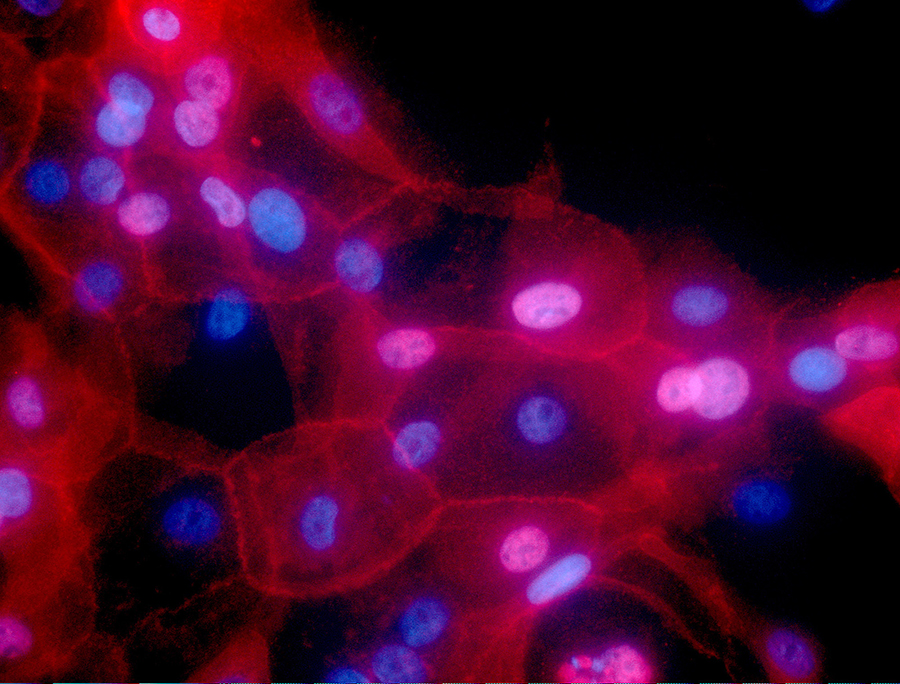Washington (AP) – Cancer patients often wonder “why me?” Does their tumor run in the family? Did they try hard enough to avoid risks like smoking, too much sun or a bad diet?
Lifestyle and heredity get the most blame but new research suggests random chance plays a bigger role than people realize: Healthy cells naturally make mistakes when they multiply, unavoidable typos in DNA that can leave new cells carrying cancer-prone genetic mutations.

How big? About two-thirds of the mutations that occur in various forms of cancer are due to those random copying errors, researchers at Johns Hopkins University reported Thursday in the journal Science.
Whoa: That doesn’t mean most cases of cancer are due solely to “bad luck.” It takes multiple mutations to turn cells into tumors – and a lot of cancer is preventable, the Hopkins team stressed, if people take proven protective steps.
Thursday’s report is an estimate, based on a math model, that is sure to be hotly debated by scientists who say those unavoidable mistakes of nature play a much smaller role.
But whatever the ultimate number, the research offers a peek at how cancer may begin.
And it should help with the “why me” question from people who have “done everything we know can be done to prevent cancer but they still get it,” said Hopkins’ Dr. Bert Vogelstein, a pioneer in cancer genetics who co-authored the study. “They need to understand that these cancers would have occurred no matter what they did.”
Gene mutations cause cancer but what causes the mutations?
You might inherit some mutations, like flaws in BRCA genes that are infamous for causing aggressive breast and ovarian cancers in certain families.
More commonly, damage is caused by what scientists call environmental factors – the assault on DNA from the world around us and how we live our lives. There’s a long list of risks: Cigarette smoke, UV light from the sun, other forms of radiation, certain hormones or viruses, an unhealthy diet, obesity and lack of exercise.
Then there are those random copy errors in cells – what Vogelstein calls our baseline rate of genetic mutations that will occur no matter how healthy we live.
One way to think of it: If we all have some mutations lurking in our cells anyway, that’s yet another reason to avoid known risks that could push us over the edge.
How cells make typos
New cells are formed when an existing cell divides and copies its DNA, one cell turning into two. Every time DNA is copied, about three random mutations occur, Vogelstein said.
We all harbor these kinds of mutations and most don’t hurt us because they’re in genes that have nothing to do with cancer or the body’s defense mechanisms spot and fix the damage, said Dr. Otis Brawley of the American Cancer Society, who wasn’t involved in the new research.
But sometimes the errors hit the wrong spot and damage genes that can spur cancerous growth or genes that help the cell spot and fix problems. Then the damaged cells can survive to copy themselves, allowing important mutations to gradually build up over time. That’s one reason the risk of cancer increases with age.
The study findings
Thursday’s study follows 2015 research by Vogelstein and statistician Cristian Tomasetti that introduced the idea that a lot of cancer may be due to “bad luck,” because those random DNA copying mistakes are more common in some kinds of cancer than others. Cancer prevention advocates worried the idea might sway people to give up on healthier lifestyles.
This time around, the duo analyzed mutations involved in 32 types of cancer to estimate that 66 percent of the gene flaws are due to random copy errors. Environmental and lifestyle factors account for another 29 percent, while inherited genes made up just 5 percent of the mutations.
Different organs, different risks
The same person can harbor a mix of mutations sparked by random DNA mistakes, heredity or environmental factors. And which is the most common factor differs by cancer, the Hopkins team said.
For example, they estimate that random cell errors account for 77 percent of critical mutations in pancreatic cancer – while still finding some caused by lifestyle risks like smoking. And the random DNA mistakes caused nearly all the mutations leading to childhood cancers, which is not surprising because youngsters have had little time to be exposed to environmental risks.
In contrast, most lung cancer mutations were the result of lifestyle factors, mainly from smoking. And while lung tissue doesn’t multiply frequently, the small number of mutations caused by chance DNA errors might explain rare cases of never-smokers who still get sick.
“This paper is a good paper,” said the cancer society’s Brawley. “It gives prevention its due respect.”
Other scientists see more to the story
Estimates from Britain suggest 42 percent of cancers are potentially preventable with a healthy lifestyle, and the Hopkins team says their mutation research backs that idea.
But Dr. Yusuf Hannun, Stony Brook University’s cancer center director, contends that’s just the number known to be preventable today – researchers may discover additional environmental risks we can guard against in the future.
He said the Hopkins paper exaggerates the effect of the unavoidable DNA mistakes. His own 2015 research concluded they account for 10 to 30 percent of cancer cases.




